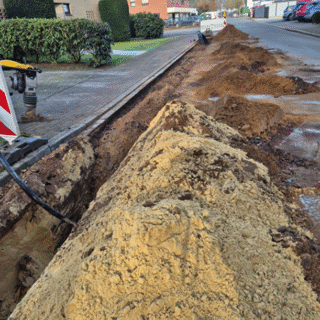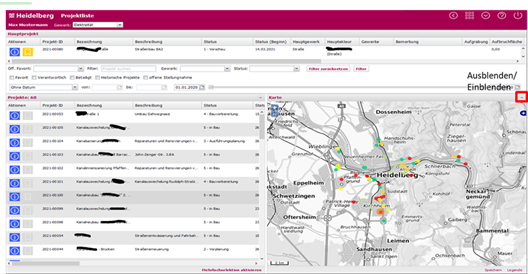Digitization in civil engineering: Modern construction site management takes the pressure off municipal utilities, local authorities and industry
In an increasingly digitalized world, municipal utilities, local authorities, and industry are also faced with the task of making their internal processes more efficient, transparent, and citizen-friendly. The importance of well-thought-out digitalization is particularly evident in the area of infrastructure planning and maintenance, such as road or pipeline construction. Digital construction site management offers enormous advantages here: It enables
- structured project planning
- improves coordination with internal and external partners
- simultaneously reduces costs, duplication of work, and citizen complaints.
This article shows how such a system can work – in a practical, comprehensible way and with a concrete application example from industry.

Why digital construction site management (digitales Baustellenmanagement)?
Cities, municipal utilities, and supply and disposal companies are facing growing challenges:
- Complex infrastructure projects in densely built-up areas
- Emissions and traffic regulations, for example in the context of climate-friendly mobility
- Increasing participation obligations towards citizens and other stakeholders
- And: internal coordination problems between building authorities, utilities, transportation authorities, and service providers
Digital construction site management creates a central platform for planning, coordinating, and approving measures—including all roles, requests, statements, and documents.
The building blocks of a modern system
- Role concept: Everyone involved—from the requester to the legal reviewer to system support—has clear responsibilities. Integrated escalation management ensures reliable response times.
- Project management: Participants can directly mark measures, submit comments, upload documents, and stay informed about changes.
- Whiteboard and messaging system: Project-related communication is recorded centrally – no more scattered emails.
- Enquiry portal and statements: explosive ordnance queries, environmental and pipeline approvals, permits – all via a single platform.
- Final reports at the touch of a button: for transparency, documentation, and archiving.

Practical example: ThyssenKrupp Steel Europe AG
With over 120 km of roads, 50 km of railways, and an extensive network of electricity, gas, water, and more, ThyssenKrupp has recognized the importance of integrated construction site management:
- The renovation of district heating pipes and repairs at the Schwelgern coking plant required close coordination with the authorities and the internal fire department.
- The digital system enabled construction phases to be better coordinated, traffic disruptions to be minimized, and security of supply to be maintained.

Conclusion for decision-makers
For decision-makers in municipal utilities and local government, one thing is clear: the need for a digital, integrated solution for construction site coordination is real – and urgent. Digital construction site management not only creates transparency about ongoing and planned measures, but also enables proactive management of resources, budgets, and citizen communication. Investing now lays the foundation for more efficient processes, greater citizen satisfaction, and sustainable infrastructure development.
The digitization of construction projects is not a vision of the future – it is starting now.

